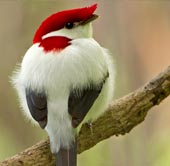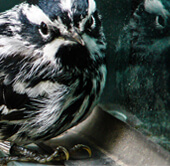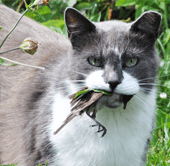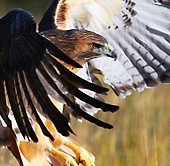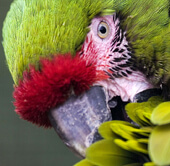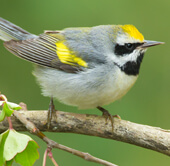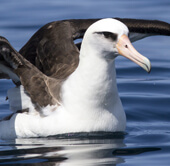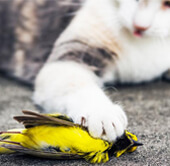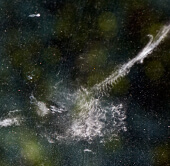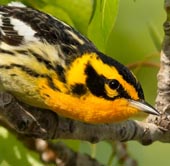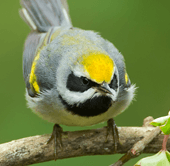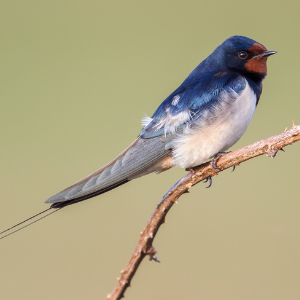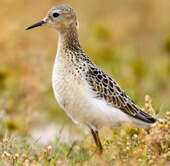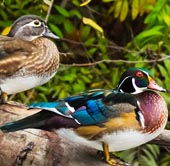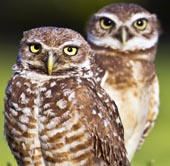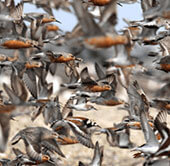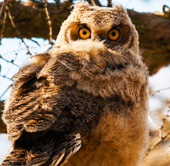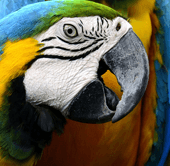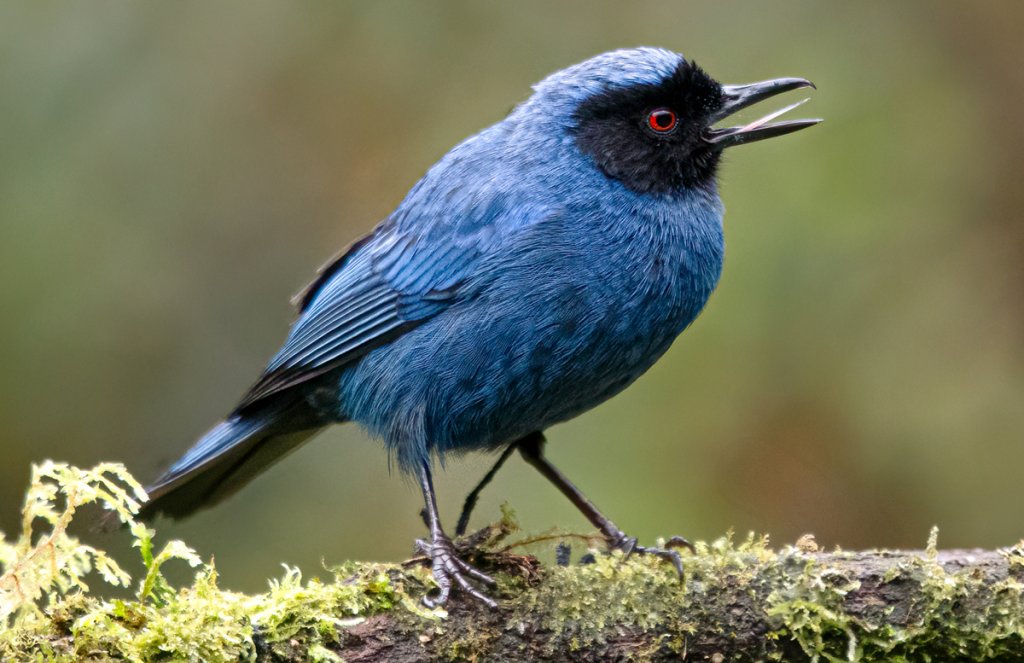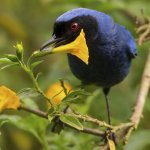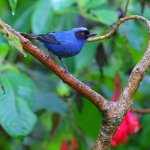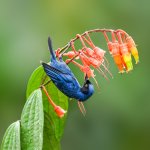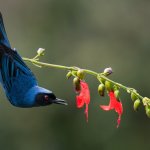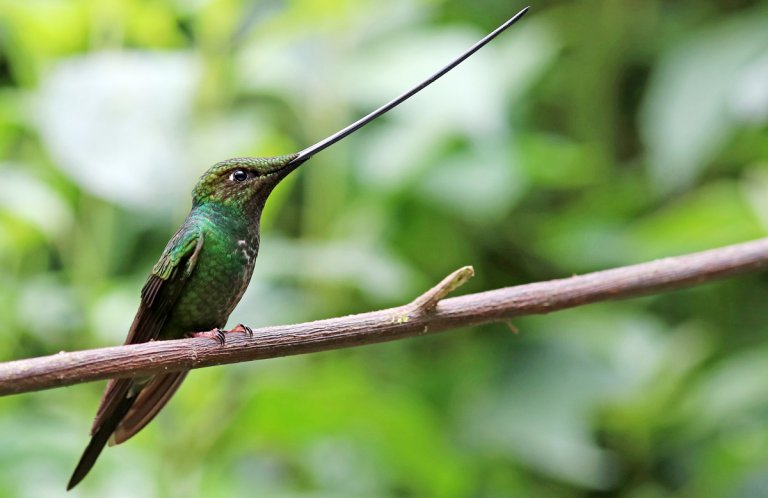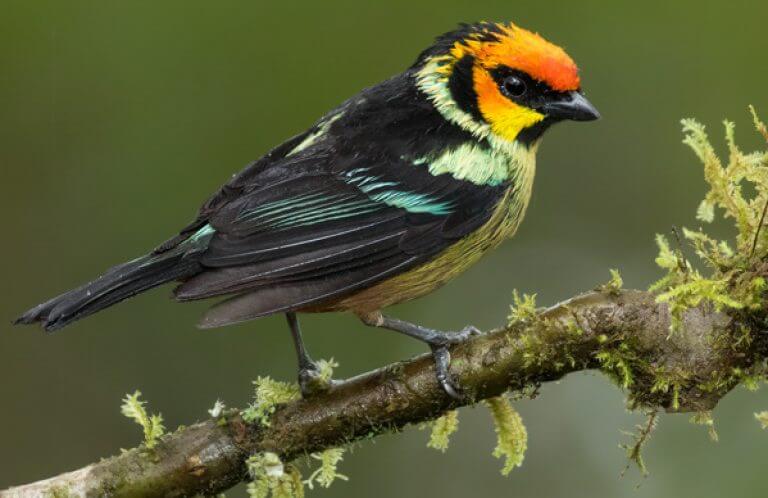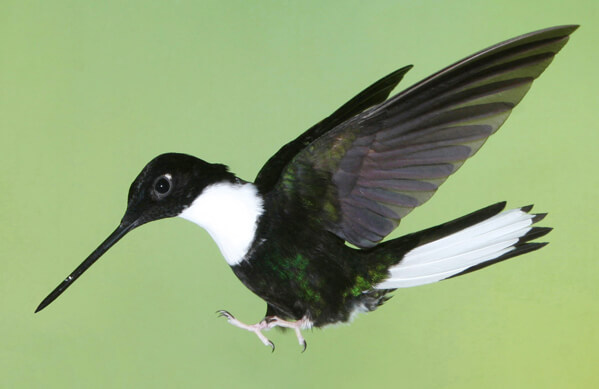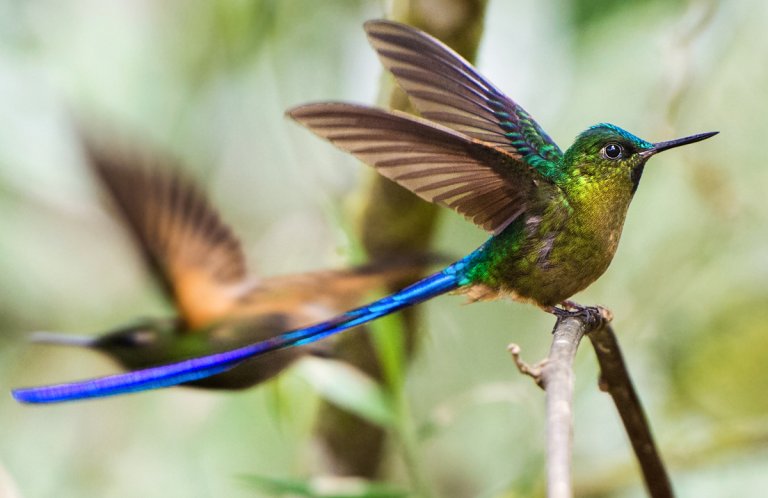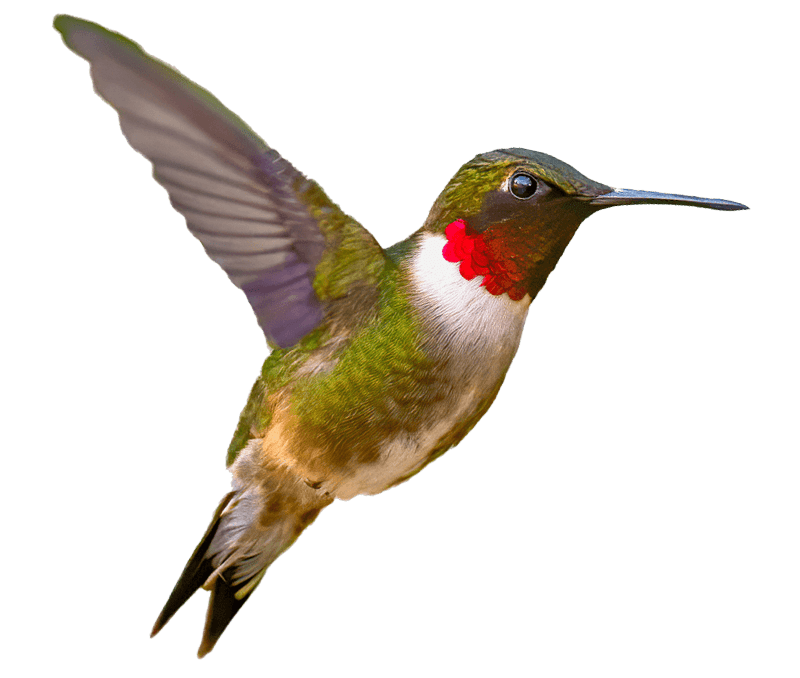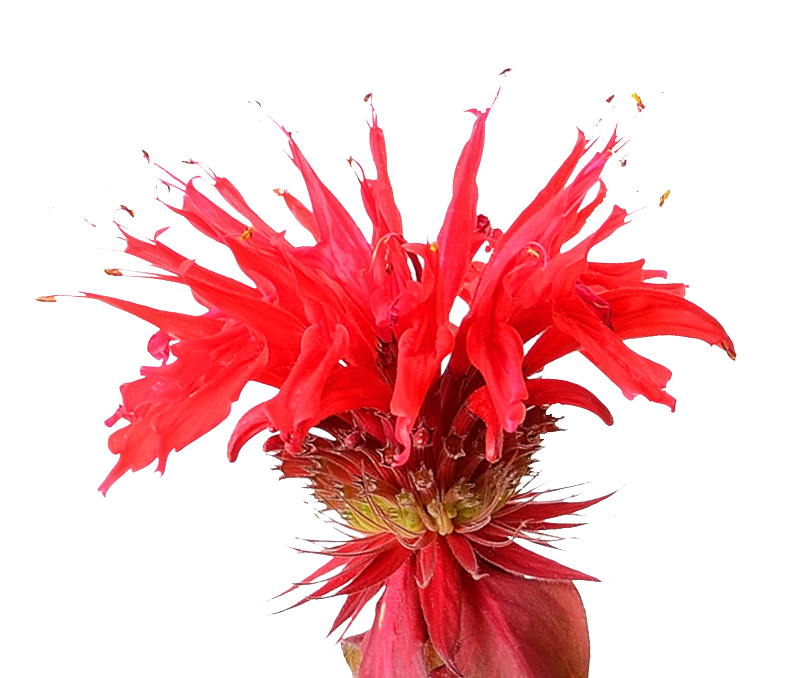About the Masked Flowerpiercer
A common, confiding, and conspicuous member of the tanager family, the bright blue Masked Flowerpiercer is a familiar sight to birders throughout the Andes. It's easily recognizable and aptly named, with a large black mask accented by bright red eyes and ultramarine blue body plumage. Its wings and tail feathers are black with blue edging, and its legs and feet are black. The sexes look alike, although the female's colors are more subtle. Juvenile Masked Flowerpiercers are a dull blue-gray, with an indistinct mask. Five subspecies are recognized across its range, differing in color intensity and song nuances.
This bird is named for its feeding habits, which are made possible by its highly specialized bill. Like other flowerpiercers, the Masked Flowerpiercer has a slightly upturned bill with a hooked upper mandible and a shorter, sharp lower mandible used to pierce the base of flowers to access the nectar inside. Its genus name, Diglossa, derives from the Greek word for “double-tongued” and refers to this bird's forked, brush-tipped tongue, another specialization that facilitates nectar feeding.
By feeding from a flower's base, the flowerpiercer can access nectar normally out of reach of other birds except Andean hummingbird species such as the Sword-billed Hummingbird and Violet-tailed Sylph. While the hummingbirds act as pollinators, the flowerpiercers do not provide this service, so they are often considered nectar “robbers”.
Songs and Sounds
The Masked Flowerpiercer's rather insubstantial-sounding song starts with thin, high-pitched tones that accelerate into a wispy-sounding twitter. Its calls are faint zeet notes.
Song:
Calls and song:
Breeding and Feeding
The Masked Flowerpiercer is a sociable species, usually sighted foraging in pairs, small flocks, or mixed-species flocks along with other flowerpiercer and tanager species, hummingbirds, and warblers. A fairly active bird, the Masked Flowerpiercer moves among leaves in little hopping movements. Despite being a common and relatively easily observed species, information about the life history of the Masked Flowerpiercer, in particular its breeding biology, is scant.
The Masked Flowerpiercer feeds on nectar, small fruits and seeds, and insects. Like other flowerpiercers, it obtains nectar by puncturing the bases of flowers, a technique known as “nectar robbing.” This species has a slightly longer bill than other flowerpiercers, which also allows it to probe flowers in a more “conventional” manner. The Masked Flowerpiercer also visits hummingbird feeders for nectar.
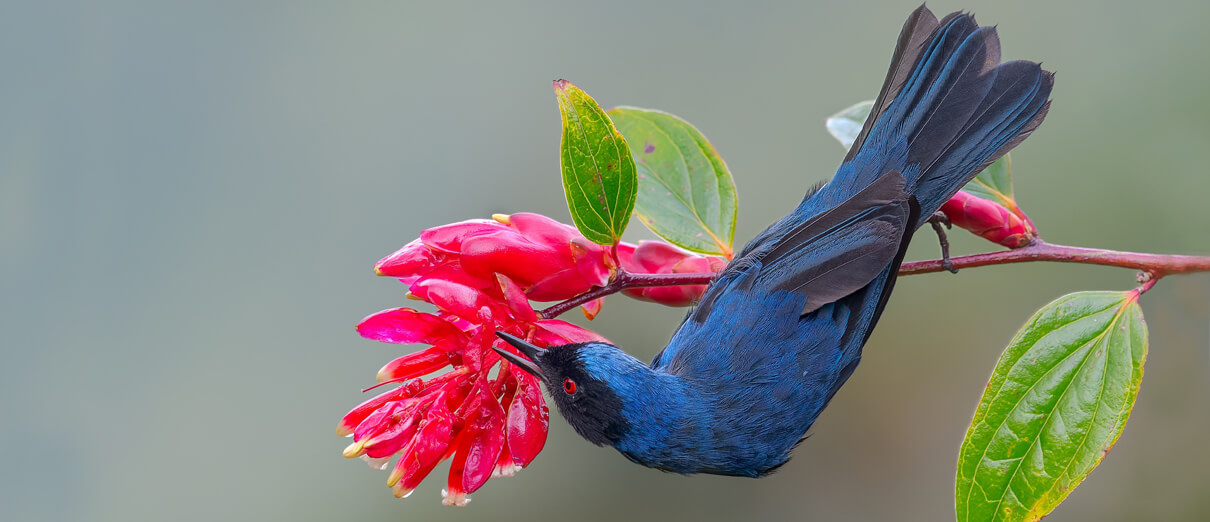
Like other flowerpiercer species, the Masked Flowerpiercer is likely monogamous, forming pair bonds that last the duration of the breeding season. They are reported to breed twice a year, likely during the rainy season.
The Masked Flowerpiercer's open-cup nest is constructed from moss, grass, and plant fibers, and lined with feathers.
Masked Flowerpiercer eggs have been described as pale greenish-blue, spotted with brown. Although specifics are lacking for this species, existing data on close relatives indicate that the female Masked Flowerpiercer likely incubates the clutch of two eggs, while both parents feed the chicks after hatching. Young probably leave the nest after approximately two weeks.
Region and Range
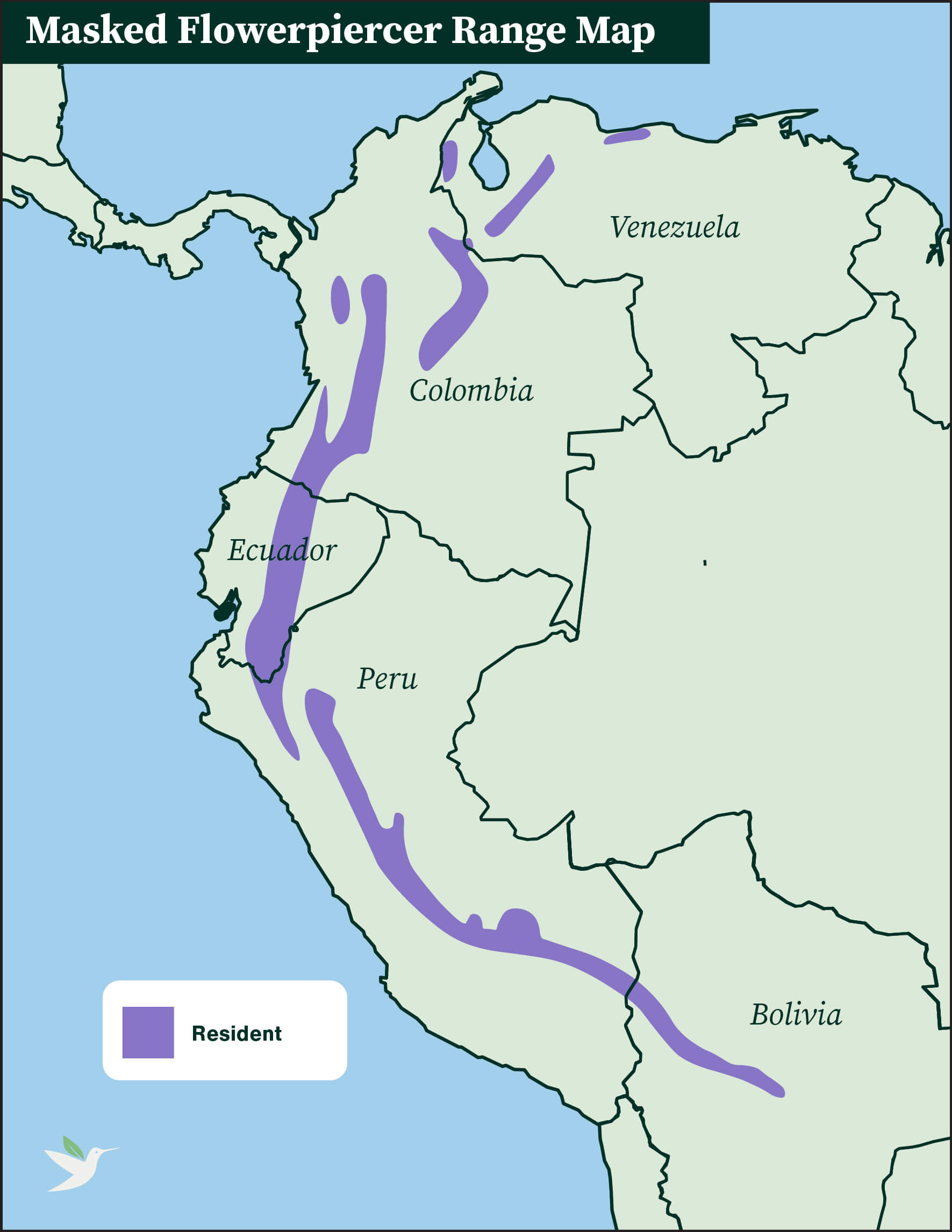
The Masked Flowerpiercer is a common resident of humid, high-altitude evergreen forests, edges, and scrublands. It's usually found at altitudes above 6,600 feet and is widespread on both slopes of the Andes.
Conservation
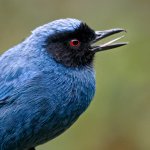
Help support ABC's conservation mission!
Habitat loss due to deforestation poses a threat to some local populations of Masked Flowerpiercer. This species is somewhat sensitive to human disturbance. A rapidly changing climate also has the potential to impact the Masked Flowerpiercer's high-altitude habitats. Drought, increasing temperatures, and changing rainfall could degrade habitat quality and affect food resources for this bird.
Working with dozens of partners and local communities, ABC supports a growing network of protected areas in more than a dozen countries. The Masked Flowerpiercer can be sighted at over 22 ABC-supported reserves, including Ecuador's Tapichalaca and Yanacocha Reserves.
ABC and its partners are working to address the effects of climate change throughout the Americas in three key areas — mitigation, resilience, and adaptation — to help build a sustainable, long-term future for birds.
Get Involved
Many of the rarest bird species in the Western Hemisphere remain relatively unknown. You can learn more about these birds and the threats they face by signing up for ABC's Bird of the Week email series, which frequently highlights these fascinating birds.
American Bird Conservancy and our partners throughout Latin America and the Caribbean have created and expanded more than 100 bird reserves, which protect upward of 1.1 million acres of vital habitat. Together, we've planted more than 6.8 million trees, helping to restore degraded and damaged habitat. You can help us continue to protect endangered birds by making a gift today.

